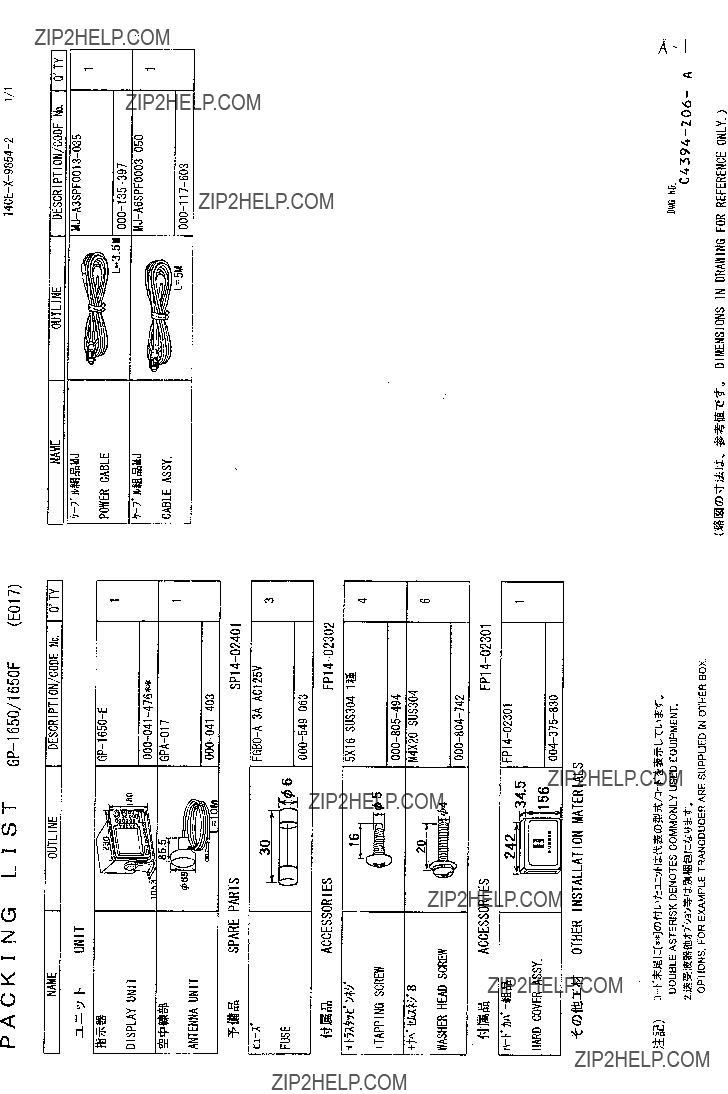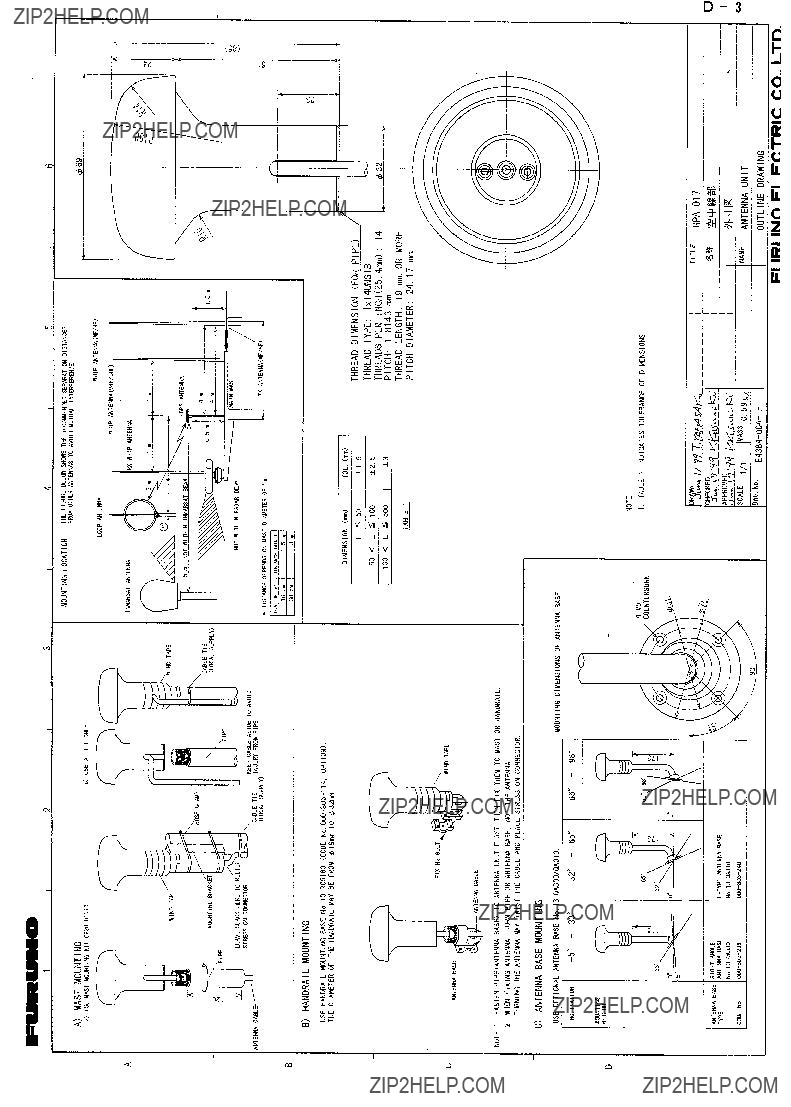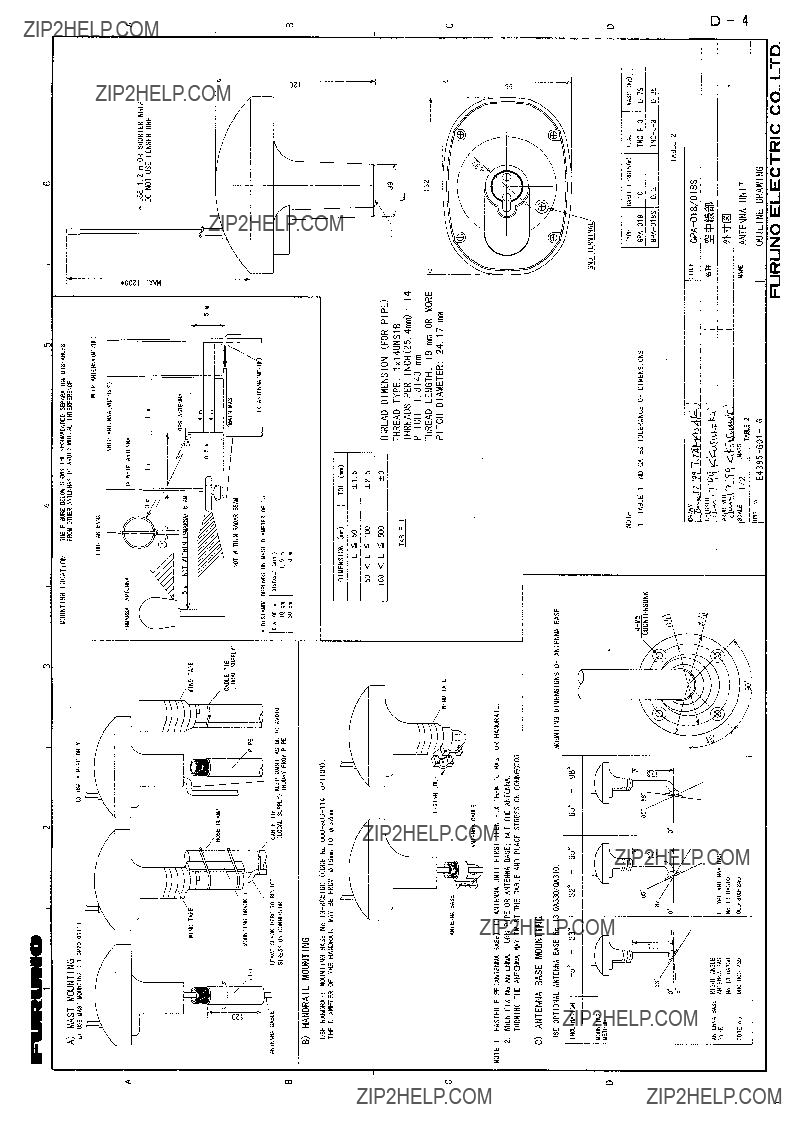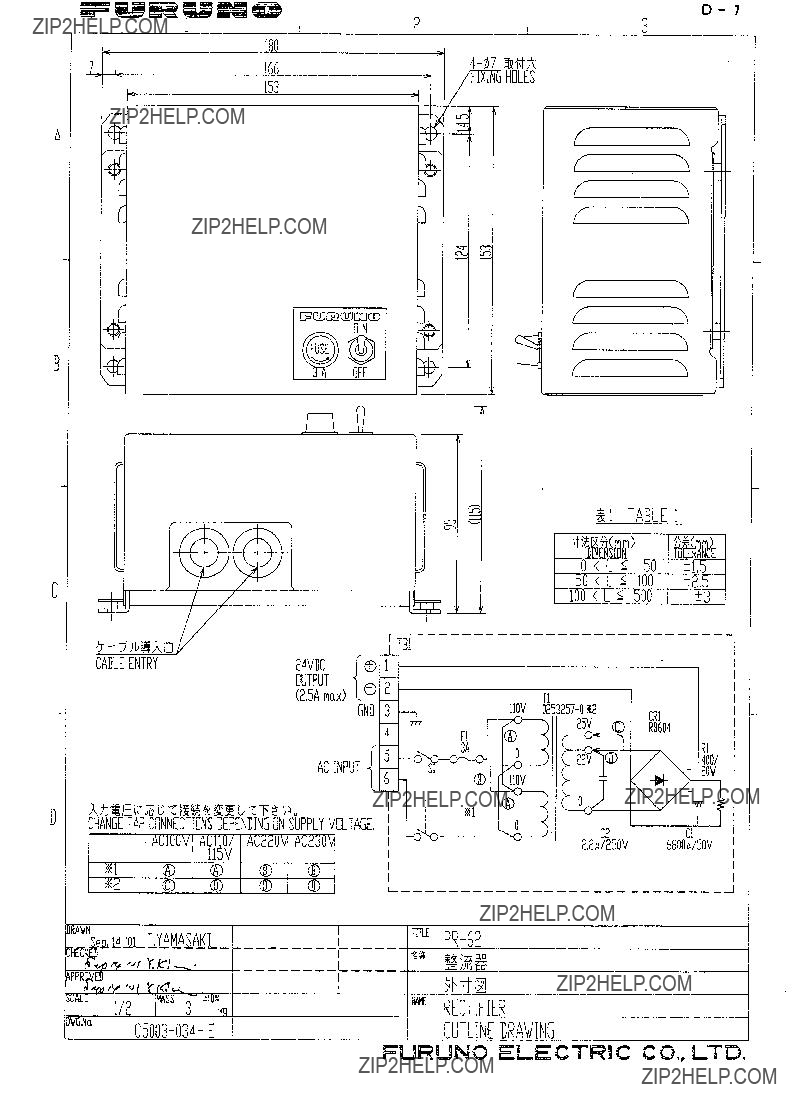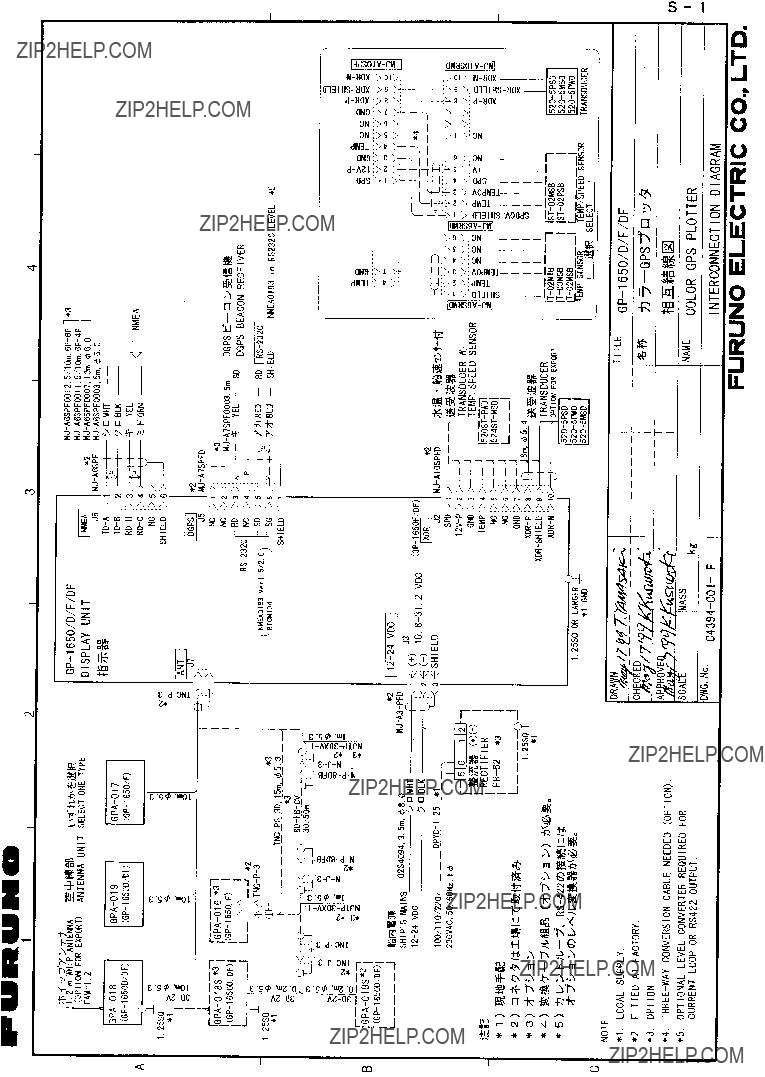
INSTALLATION MANUAL
COLOR GPS/PLOTTER/SOUNDER

INSTALLATION MANUAL
COLOR GPS/PLOTTER/SOUNDER

Nishinomiya, Japan
Telephone :
Telefax :
PUB.No.
( TATA )
Your Local Agent/Dealer
FIRST EDITION : NOV. 1998
N : FEB. 06,2002
*00080856801*
*00080856801*
* 0 0 0 8 0 8 5 6 8 0 1 *
*IME43942N00*
*IME43942N00*
* I M E 4 3 9 4 2 N 0 0 *
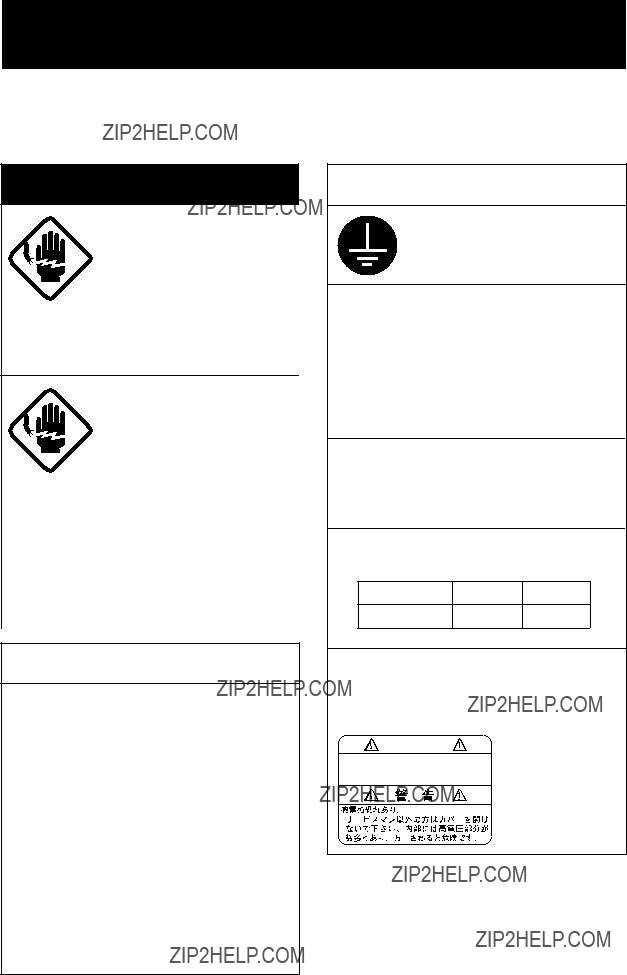
 SAFETY INSTRUCTIONS
SAFETY INSTRUCTIONS
Safety Instructions for the Installer
 WARNING
WARNING
Do not work inside the equipment unless totally familiar with electrical circuits.
Hazardous voltage which can shock, burn or cause serious injury exists inside the equip- ment.
Turn off the power at the mains switchboard before beginning the installation. Post a sign near the switch to indicate it should not be turned on while the equip- ment is being installed.
Fire, electrical shock or serious injury can result if the power is left on or is applied while the equipment is being installed.
 CAUTION
CAUTION
When handling the transducer cable, keep in mind the following points.
???Keep the cable away from oil and fuel.
???Keep the cable away from the place where it may be damaged during the installation.
???Do not paint the cable.
The sheath of the transducer cable is made of chlorophrene rubber (or vinyl chloride). Therefore, do not paint the sheath with organic liquid (such as toluene) since it may harm the sheath.
 CAUTION
CAUTION
Ground the equipment to prevent electrical shock and mutual interference.
Confirm that the power supply voltage is compatible with the voltage rating of the equipment.
Connection to the wrong power supply can cause fire or equipment damage. The voltage rating appears on the label at the rear of the display unit.
Use the correct fuse.
Use of a wrong fuse can cause fire or equipment damage.
Keep the following compass safe distance.
Standard Steering
A warning label is attached to the equip- ment. Do not remove the label. If the label is missing or illegible, contact
a FURUNO agent or dealer.
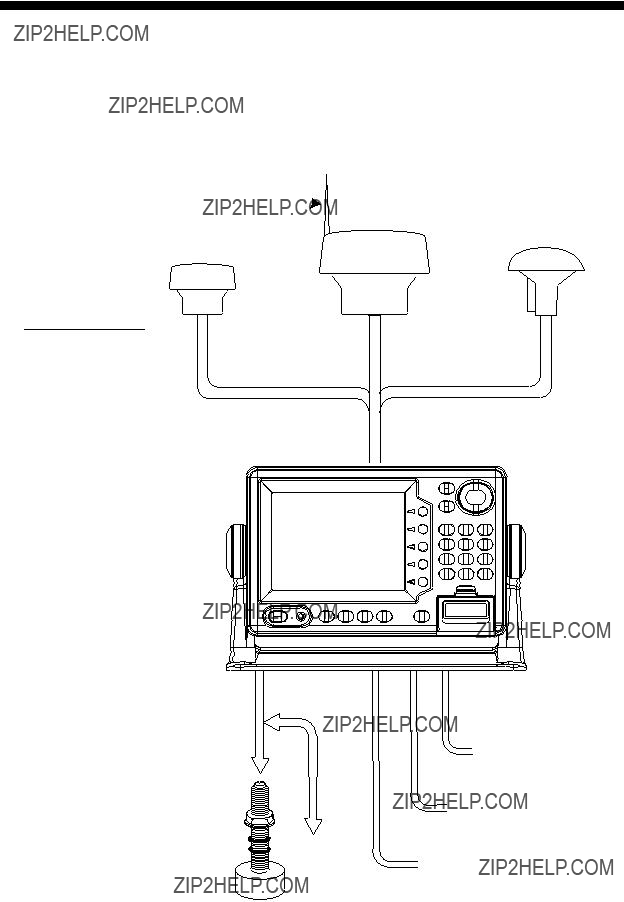
System Configuration
The
ANTENNA UNIT
Receives signal from GPS satellite and beacon reference station
DISPLAY UNIT
Ship???s position is calculated in longitude and latitude from signal received from the an- tenna unit and displayed on the screen.
i

Equipment Lists
Standard supply
Optional equipment
ii

Optional equipment (con't)
iii
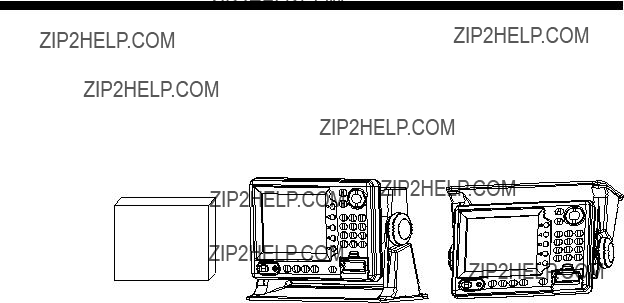
1.Installation of Standard Equipment
1.1Installation of Display Unit
Mounting considerations
The display unit can be installed on a tabletop, on the overhead or flush mounted in a console or panel.
Figure
When selecting a mounting location for the display unit keep the fol- lowing in mind:
???Keep the display unit out of direct sunlight.
???The temperature and humidity should be moderate and stable.
???Locate the unit away from exhaust pipes and vents.
???The mounting location should be well ventilated.
???Mount the unit where shock and vibration are minimal.
???Keep the unit away electromagnetic field generating equipment such as motor, generator.
???For maintenance and checking purposes, leave sufficient space at the sides and rear of the unit and leave slack in cables.
???A magnetic compass will be affected if placed too close to the display unit. Observe the following compass safe distances to pre-
vent disturbance to the magnetic compass:
Standard compass: 0.82 meters
Steering compass: 0.62 meters

Mounting procedure
Follow the procedure below to mount the display unit on a tabletop or the overhead.
Tabletop, overhead mounting
1.Fix the hanger by four pan head screws M5 X 16.
2.Screw knob bolts in display unit, set it to hanger, and tighten knob bolts.
3.Attach hard cover to protect LCD.
Figure
Flush mounting
Note: Use supplied pan head screws when the thickness of the bulk- head is from 11 to 14 mm. For bulkhead which exceeds 14 mm in thickness the length of the pan head screws should be bulkhead thick- ness+7.8?? 1.5 mm. Also the length of B should max. 8mm.
1.Prepare a cutout in the mounting location whose dimensions are as shown in Figure
2.Fix the display unit by six pan head screws M4 X 20. Refer to the outline drawing on page

Pan head screws
Flush mount
4.5
Figure
1.2 Installation of Antenna Unit
Mounting considerations
Install the antenna unit referring to the installation diagram on page
???Select a location out of the radar beam. The radar beam will ob- struct or prevent reception of the GPS satellite signal.
???The location should be well away from a VHF antenna. A GPS receiver is interfered by a harmonic wave of a VHF antenna.
???There should be no interfering object within the
???Mount the antenna unit as high as possible. Mounting the antenna
unit as high as possible keeps it free of interfering objects and water spray, which can interrupt reception of GPS satellite signal if the water freezes.
??? The length of the whip antenna for the
???Do not shorten the antenna cable.
???If the antenna cable is to be passed through a hole which is not large enough to pass the connector, you may unfasten the connec- tor with a needle nose pliers and
fasten it as shown in Figure
Washer Gasket (reddish brown)
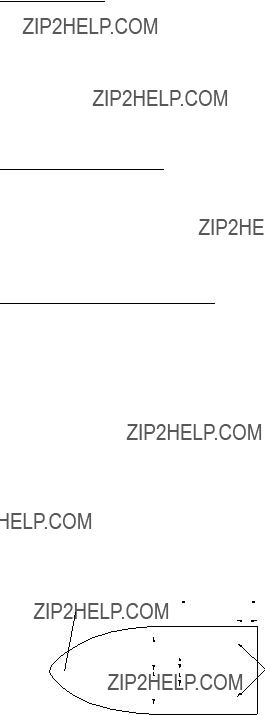
1.3 Installation of Transducers
Installing the
Necessary tools
You will need the following tools:
???Sandpaper (#100)
???Silicone sealant
???Silicone grease
Remarks on installation
???Do the installation with the boat hauled out of the water.
???Turn off the engine while installing the equipment.
???Install the transducer in the engine room.
Selecting the mounting location
Keep the following points in mind when selecting a mounting loca- tion:
???The mounting location should be where the hull is of
???Do not place the transducer over hull struts or ribes which run under the hull.
???Avoid a location where the rising angle of the hull exceeds 15??, to minimize the effect of the boat???s rolling.
???You will finalize the mounting location through some trial and error. The procedure for this is shown later.
Figure

Attaching the transducer
1.Clean the transducer face to remove any foreign material. Lightly roughen the transducer face with #100 sandpaper. Also, roughen the inside of the hull where the transducer is to be mounted.
2.Warm the silicone sealant to 40??C before usage to soften it. Coat the transducer face and mounting location with silicone sealant.
Transducer face
Silicone sealant
Figure
3.Press the transducer firmly down on the hull and gently twist it back and forth to remove any air which may be trapped in the silicone sealant.
Squeeze out air bubbles.
Hull
Silicone sealant
Figure

Observing the picture
1.Press the [POWER] key to turn on the display unit.
2.Press the [SNDR] key to select the sounder display.
3.Press the soft key labeled "MODE/FREQ" to display the follow- ing message.
MODE/FREQ
???
AUTO (CRUSING)
AUTO (FISHING)
MANUAL
???
Figure
4.Select "MANUAL" by the arrow key.
5.Press the soft key labeled "RETURN".
6.Press the soft key labeled "GAIN" to display the following mes- sage.
GAIN
???
50
HIGH
LOW
???
Figure
7.Confirm that Gain is set at 50 (midpoint).
8.Press the soft key labeled "RETURN".
9.Press the soft key labeled "RANGE".
10.Select "15ft" by the [??? ] key.
11.Note the depth to the seabed.

Figure
If the bottom is displayed in red and the
If the bottom is not displayed in reddish brown, the mounting location is unsuitable. Relocate the transducer and do the follow- ing.
1.Press the [POWER] key to turn off the power.
2.Gently dismount the transducer with piece of wood.
3.Do steps 1 through 5 in the previous procedure. Repeat until a suitable location is found.
Final preparation
Support the transducer with a piece of wood to keep it in place wile it is drying. Let the transducer dry

Installing the
Transducer mounting location
This type of mounting provides the best performance of all, since the transducer protrudes from the hull and the effect of air bubbles and turbulence neat the hull skin is reduced. When the boat has a keel, the transducer should be at least 30 cm away from it. Typical through hull mountings are shown in the figure on the next page.
The performance of the video sounder is directly related to the mount- ing location of the transducer, especially for
??? Air bubbles and turbulence caused by movement of the boat seri- ously degrade the sounding capability of the transducer. The trans- ducer should, therefore, be located in a position where water flow is the smoothest. Noise from the propellers also adversely affects performance and the transducer should not be mounted nearby. The lifting strakes are notorious for creating acoustic noise, and these must be avoided by keeping the transducer inboard of them.
???The transducer must always remain submerged, even when the boat is rolling, pitching or up on a plane at high speed.
???A practical choice would be somewhere between 1/3 and 1/2 of
the boat's length from the stern. For planing hulls, a practical loca- tion is generally rather far astern, so that the transducer is always in water regardless of the planing attitude.
Transducer outline drawings
22
24
120
Figure
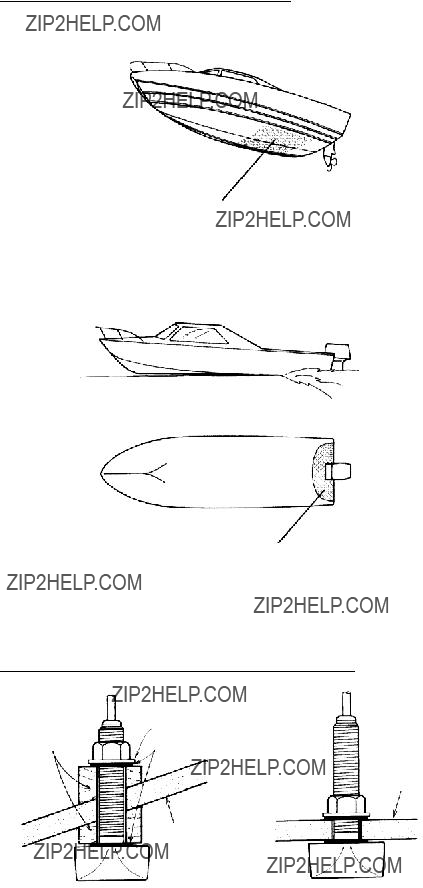
Acceptable transducer mounting locations
???Position 1/2 to 1/3 length of the hull from stern
???15 to 30 cm off center line (inside first lifting strakes).
Figure
High speed
???Within the wetted bottom area
???Deadrise angle within 15??
Figure
Typical
Flat washer
Fairing block
Rubber washer
Hull bottom
Hull bottom
Figure
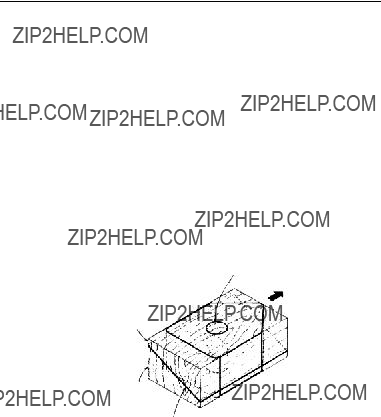
Procedure for installing the
1.With the boat hauled out of the water, mark the location selected for mounting the transducer on the bottom of the hull.
2.If the hull is not level within 15?? in any direction, fairing blocks made out of teak should be used between the transducer and hull, both inside and outside, to keep the transducer face parallel with the water line. Fabricate the fairing block as shown below and make the entire surface as smooth as possible to provide an un- disturbed flow of water around the transducer. The fairing block should be smaller than the transducer itself to provide a channel to divert turbulent water around the sides of the transducer rather than over its face.
Hole for stuffing tube
Upper half
Lower half
BOW
Saw along slope of hull.
Figure
3.Drill a hole just large enough to pass the threaded stuffing tube of the transducer through the hull, making sure it is drilled verti- cally.
4.Apply a sufficient amount of high quality caulking compound to the top surface of the transducer, around the threads of the stuff- ing tube and inside the mounting hole (and fairing blocks if used) to ensure watertight mounting.
5.Mount the transducer and fairing blocks and tighten the locking nuts. Be sure that the transducer is properly oriented and its work- ing face is parallel to the waterline.
Note: Do not

Installing the transom mount transducer
This type of mounting is very commonly employed, usually on rela- tively small I/O or outboard boats. Do not use this method on an inboard motor boat because turbulence is created by the propeller ahead of the transducer.
There are two methods of installation: flush with hull (for flat hulls) and projecting from hull (for deep
D
D>50 cm
Figure
Installing the transom mount transducer flush with hull
(for flat hulls)
A suitable mounting location is at least 50 cm away from the engine and where the water flow is smooth.
1.Drill four pilot holes in the mounting location.
2.Attach the transducer to the bracket with tapping screws (sup- plied).
3.Adjust the transducer position so the transducer faces right to the seabed.
Note: If necessary, to improve water flow and minimize air bubbles staying on the transducer face, incline the transducer about 5?? at the rear. This may require a certain amount of experi- mentation for fine tuning at high cruising speeds.
4.Fill the gap between the wedge front of the transducer and tran- som with epoxy material to eliminate any air spaces.

M5 x 20
M5 x 20
5??
Tape
No. 1 M5 x 14
Figure
Installing the transom mount transducer projecting from hull
(for
This method is employed on
M5 x 20
M5 x 20
Figure
Transducer preparation
Before putting the boat in water, wipe the face of the transducer thor- oughly with a detergent liquid soap. This will lessen the time neces- sary for the transducer to have good contact with the water. Otherwise the time required for complete "saturation" will be lengthened and performance will be reduced.
Do not paint the transducer. Performance will be affected.

Triducer
The triducer is designed for
Mounting considerations
When selecting a mounting location keep the following points in mind:
???Air bubbles and turbulence caused by movement of the boat seri- ously degrade the sounding capability of the transducer. The trans- ducer should, therefore, be located in a position where water flow is the smoothest. Noise from the propellers also adversely affects performance and the transducer should not be mounted nearby. The lifting strakes are notorious for creating acoustic noise, and these must be avoided by keeping the transducer inboard of them.
???The transducer must always remain submerged, even when the boat is rolling, pitching or up on a plane at high speed.
???A practical choice would be somewhere between 1/3 and 1/2 of the boat???s length from the stern. For planing hulls, a practical loca- tion is generally rather far astern, so that the transducer is always in water regardless of the planing attitude.
???79 mm
133 mm
??? 51 mm
7 mm
Figure

1.4 Installation of Sensors
Transom mount water temperature sensor
???Fix the cable at a convenient location with cable clamp.
???When the cable is led in through the transom board, make a hole of approx. 17 mm diameter to pass the connector. After passing the cable, fill the hole with a sealing compound.
D
D>50 cm
M5 x 20
Mount sensor
flush with hull bottom.
Figure
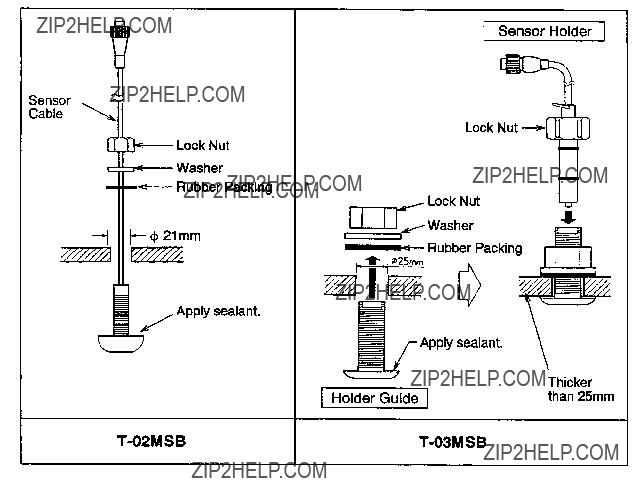
???Select a
???Select a place apart from equipment generating heat.
???Select a place in the forward direction viewing from the drain hole, to allow for circulation of cooling water.
???Select a place free from vibration.
Install the sensor as shown in Figure
Figure

Select a suitable mounting location considering the following:
??? Select a
???Select a place apart from equipment generating heat.
???Select a place in the forward direction viewing from the drain hole, to allow for circulation of cooling water.
???Select a place free from vibration.
1.
2.Make a hole of approx. 51 mm diameter.
3.Unfasten locknut and remove the sensor section.
4.Apply
5.Pass the sensor casing through the hole.
6.Face the notch on the sensor toward boat???s bow and tighten the flange.
7.Set the sensor section to the sensor casing and tighten the lock- nut.
8.Launch the boat and check for water leakage around the sensor.
Locknut
Face "notch" toward bow.
Coat with
silicone sealant. Brim
??77
Figure

2. Wiring
All wiring are terminated at the rear of the display unit.
Earth terminal
Antenna unit
DISPLAY UNIT
Earth terminal
ANTENNA UNIT
External equipment
TRANSDUCER
Figure
Power cable
Connect the power cable to the power connector. Connect the leads to the battery (12 or 24 VDC); white to plus(+) terminal and black to
Cable connector
Power cable w/fuse (3A)
Lead wire
Black White
BATTERY
Figure

Antenna unit
Connect the antenna unit cable to the ANT connector.
Transducer
Connect the transducer cable to the XDR connector. Connect the water temperature sensor (option) or water temperature/speed sensor (op- tion) to the XDR connector with the converter connector (Type : 02S4147, Code No. :
Figure
Figure
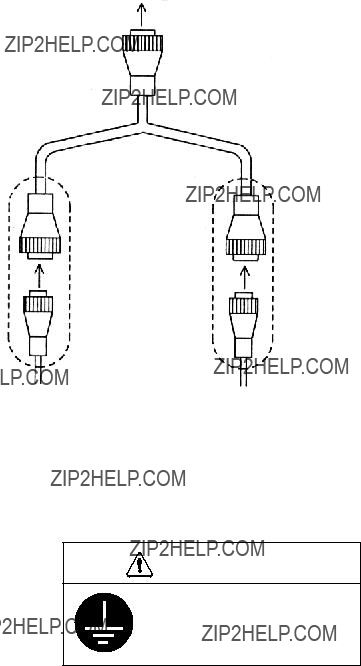
To connector at rear of display unit
Type : 02S4147
Code No. : 
Water temp., water temp/speed Transducer connector sensor connector
Figure
Ground
The display unit
contains several CPUs. While they
are operating, they radiate noise, which
can interfere with radio equipment.
Ground the unit to
prevent interference. The grounding wire should be 1.25 sq or larger and as short as possible. Connect the grounding wire to ship's ground. On a fiberglass boat, it is best to install a ground plate that measures about 20 cm by 30 cm on the outside of the hull bottom to provide a ground point. If this is not practical, the engine block can be used. Also, the antenna unit
Note: Use a ???closed??? lug to make the ground connection at the dis- play unit. Do not use an  ).
).
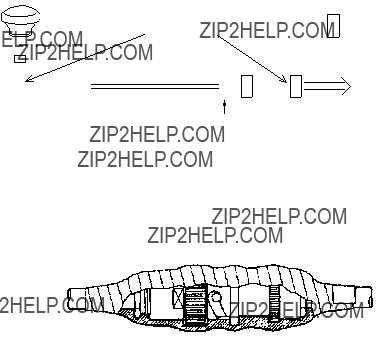
Extending antenna cable length
The standard cable is 10m long. For extension, in case of the GPA- 016,
??? Extension cable
Fabricate the end of the antenna cable and attach the coaxial con- nector. Details are shown on next page.
Fabricate locally. (See next page.)
Figure
??? Waterproofing connector
Wrap connector with vulcanizing tape and then vinyl tape. Bind the tape end with
Figure

How to attach the
Cover with
Remove outer sheath and armor by the dimensions shown left.
Expose inner sheath and shield by the dimensions shown left.
Cut off insulator and core by 10mm.
Trim shield here.
Insulator
Trim aluminum tape foil here.
Twist shield end.
Ship on clamp nut, gasket and clamp as shown left.
Fold back shield over clamp and trim.
Cut aluminum foil at four places, 90?? from one another.
Fold back aluminum foil onto shield and trim.
1
5
Pin
Clamp Nut
Shell
Solder through the hole.
Expose the insulator by 1mm.
Expose the core by 5mm.
Slip the pin onto the conductor. Solder them together through the hole on the pin.
Insert the pin into the shell. Screw the clamp nut into the shell.
(Tighten by turning the clamp nut. Do not tighten by turning the shell.)
Figure
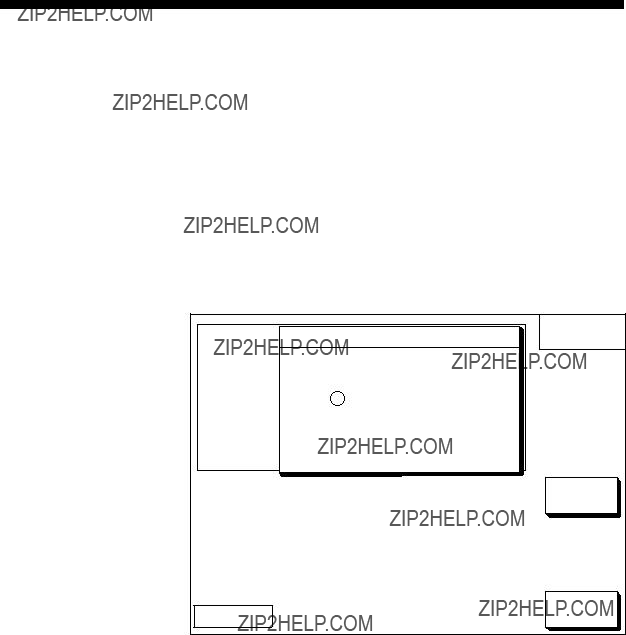
3. Initial Settings
3.1 NMEA Setting
NMEA port
1.Press the [MENU] key.
2.Press the software key labeled "CONFIGURATION".
3.Press the software key labeled "SETUP NMEA PORT1".
4.Select "FORMAT" by the arrow key.
5.Press the software key labeled "EDIT" to display the following message.
Figure
6.Select NMEA version by the arrow key. The selected item is indi- cated by black button.
7.Press the software key labeled "ENTER".
8.Press the [PLOT] key to finish.

DGPS port
1.Press the [MENU] key.
2.Press the software key labeled "CONFIGURATION".
3.Press the software key labeled "SETUP NMEA/DGPS PORT2".
4.Select "FORMAT" by the arrow key.
5.Press the software key labeled "EDIT" to display the following message.
Figure
6.Select NMEA version, external DGPS or internal DGPS by the arrow key. The selected item is indicated by black button.
7. Press the software key labeled "ENTER" or the [ENTER] key.

3.2 Output Data Sentences
Select output data sentences for external equipment as follows.
1.Press the [MENU] key.
2.Press the software key labeled "CONFIGURATION".
3.Press the software key labeled "SETUP NMEA PORT1".
4.Press the software key labeled "SELECT SNTNC." to display the following list.
Figure
5.Select data sentence you want to output data by the arrow key.
6.Press the software key labeled "ON/OFF". To output data, set to "ON".
7.Repeat to select other sentences.
8.Press the software key labeled "RETURN".
9.Press the [PLOT] key to finish.
Input/Output Sentences
*1: Cannot be input consecutively.
*2: Output automatically when LC or LA is selected.

3.3Antenna Height
1.Press the [MENU] key.
2.Press the software key labeled "GPS/DGPS/TD OPTIONS".
3.Press the software key labeled "GPS SETUP OPTIONS".
4.Select "ANT. HEIGHT" by the arrow key.
5.Press the software key labeled "EDIT" to display the following message.
ANT. HEIGHT
0 0 5 m
Figure
6.Enter the height (3 digits) of the antenna above sea level using the numeric keys.
If you enter wrong antenna height, press the software key labeled "CLEAR".
7.Press the [ENTER] key.
8.Press the [PLOT] key to finish.

3.4Baud Rate Setting
1.Press the [MENU] key.
2.Press the software key labeled "GPS/DGPS/TD OPTIONS".
3.Press the software key labeled "DGPS SETUP OPTIONS" to dis- play the following message.
4.Confirm that "ON" is selected at "DGPS MODE" field for GP- 1650DF.
5.Select "BEACON BAUD RATE" by the arrow key.
6.Press the software key labeled "EDIT" to display the following message. Beacon baud rate cannot be set when "BEACON FREQUENTRY" is set to "AUTO".
BEACON BAUD RATE
???
200 ' 100
50
???
Figure
7.Select beacon baud rate corresponding to DGPS reference sta- tion to use.
8.Press the [ENTER] key.
9.Press the [PLOT] key to finish.

3.5Beacon frequency Setting
1.Press the [MENU] key.
2.Press the software key labeled "GPS/DGPS/TD OPTIONS".
3.Press the software key labeled "DGPS SETUP OPTIONS" to dis- play the following message.
Figure
4.Select "BEACON FREQUENCY" by the arrow key.
5.Press the software key labeled "EDIT" to display the following message.
BEACON FREQUENCY
???
' AUTO
MANUAL s 284.0 kHz
???
Figure
6.Select "AUTO" or "MANUAL" by the arrow key. When you se- lect "MANUAL", operate the cursor pad to move the cursor to frequency dialog box. And press the arrow key to select the fre- quency desired.
7.Press the [ENTER] key.
8.Press the [PLOT] key to finish.

3.6Depth Adjustment
1.Press the [MENU] key.
2.Press the software key labeled "DISPLAY OPTION".
3.Press the software key labeled "NEXT PAGE".
4.Select "DEPTH ADJ." by the arrow key.
5.Press the software key labeled "EDIT" to display the following message.
DEPTH ADJ
???
+ 0.0 f t
???
Figure
6.Set depth adjustment by the arrow key. The adjustment range is
For example, if the depth readout is 5 feet lower than actual depth, enter +5 feet.
7.Press the software key labeled "RETURN".
8.Press the [PLOT] key to finish.

3.7 External Equipment Setup (Option)
This section shows you how to set up the
Speed Source
1.Press the [MENU] key.
2.Press the software key labeled "DISPLAY OPTIONS".
3.Press the software key labeled "NEXT PAGE" to display the fol- lowing display.
Figure
4.Select "SPEED SOURCE" by the arrow key.
5.Press the software key "EDIT" to display the following message.
SPEED SOURCE
???
OWN PDDWHL
GPS
???
Figure
6.Select source of speed by the arrow key; "OWN PDDWHL" (speed sensor) or "GPS". The selected item is indicated by black button.
Adjust speed when you select "OWN PDDWHL". Refer to next page.
7.Press the software key labeled "ENTER".
8.Press the [PLOT] key to finish.

Speed Adjustment
Adjust speed when you select own speed source "OWN PDDWHL".
1.Press the [MENU] key.
2.Press the software key labeled "DISPLAY OPTIONS".
3.Press the software key labeled "NEXT PAGE" to display the Fol- lowing display.
Figure
4.Select "SPEED ADJ." by the arrow key.
5.For speed
SPEED ADJ
???
+ 00 %
???
Figure
6.Correct speed readout by the arrow key. The adjustment range is
For example, if readout is 10% lower than actual speed, enter +10%.
7.Press the software key "RETURN".

8. Press the [PLOT] key to finish.
Temperature Adjustment
1.Press the [MENU] key.
2.Press the software key labeled "DISPLAY OPTIONS".
3.Press the software key labeled "NEXT PAGE" to display the fol- lowing display.
Figure
4. Select "TEMP ADJ." by the arrow key.

4. Installation of DGPS Beacon Receiver
(for
The DGPS beacon receiver
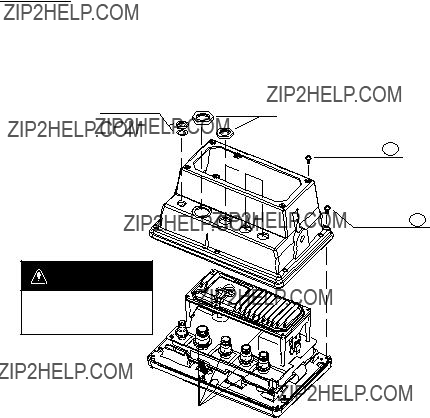
Disassembly
Procedure
1.Turn off the power. Wait at least one minute before opening the cover, to allow capacitors to discharge.
2.Remove nuts attached to DGPS, NMEA and power supply connectors at the rear of the display unit.
Nut, Washer
WARNING
Do not connect the power cable with the cover removed.
Nut
COVER ASSEMBLY
Screws X 6 B
Screws X 6 A
Figure
3.Remove nuts and washer attached to ANT connector.
4.Remove twelve screws at rear of the display unit to detach
panel/chassis assembly from cover assembly. Discard six screws A (3X12).
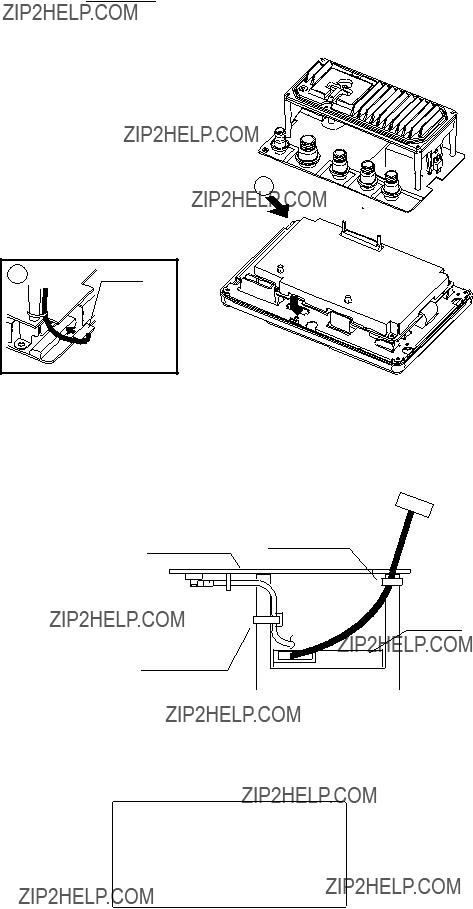
Installation of DGPS receiver
Procedure
1. Disconnect 8P connector as shown in the figure below.
CHASSIS ASSEMBLY
A
 CONNECTOR
CONNECTOR
Figure
2.Dismount chassis assembly from panel assembly by disconnect- ing connector shown in the figure above.
3.Cut the cable ties as shown in the figure below.
J8
Cut cable tie.
Figure
4.Dismount heat sink from chassis assembly by unfastening four screws on the ANLG board and disconnecting the connector of the mini pin coaxial cable.
Handling of Coaxial Cable
???Do not touch the connector with bare hands; use gloves.
???Use radio pincers to remove, and pull out straightly.
???Plug in connector straightly.

Screws X 4
ANLG Board
A
Mini pin coax. cable
Heat sink
Figure
5.Take off the mini pin coaxial cable from J2 on the
6.Open the lid of
7.Connect the mini pin coaxial cable to J1 of
J1
Notch
Beacon receiver
Cable assy.
Figure
8.Connect cable assy.
9.Close the lid of the
10.Connect connector assy.
11.Fasten the

M3X10, 4 pcs.
Connect to
J8 on ANLG
Board.
Connect to
J2 on
Connect to
J106 on
MAIN Board.
Connect to J107 on MAIN Board
Cable Assy.
Cover of
Notch
Beacon Receiver Board
HEAT SINK
Figure
12.Connect the cable assay.
13.Pass the mini pin conxial cable J1 on the
Mini pin coxial cable
HEAT SINK
Connect cable assy. J1 of
to J8 of ANLG board
to J106 of MAIN board
Cable tie
Clamp
Connect mini pin coaxial cable between J1 of
Figure

14.Mount the ANLG board on the heat sink.
15.Mount chassis assembly on the panel assembly. Connect 8P con- nector and 6P connector to Main board as shown in the figure below.
CHASSIS ASSEMBLY
A
 CONNECTOR
CONNECTOR
Figure
16.Fasten 8P connector cable and 6P connector cable by cable tie as shown in the figure below. Fasten mini pin coaxial cable by cable tie as shown in the figure.
Note: After connecting, pull up cable to remove slack so as not to pinch the cable between cover panel assembly.
Cable tie
ANLG board
PH8P
J106
Figure
17.Reassemble the display unit.
Use new screws size 3X12 (supplied).
Screws X 6
Torque:
0.74~0.78 N m
m
New screws X 6
Torque:
0.74~0.78 N m
m
Figure

Note: When reattaching the cover, confirm the following parts are attached.
. Shield gasket, cover gasket (See figure
. Connector gasket (See figure
Cover gasket
Shield gasket(1)
Shield gasket (2)
Figure

Checking the DGPS installation
1.Press the [MENU] key.
2.Press the software key labeled "CONFIGURATION".
3.Press the software key labeled "SYSTEM MENU".
4.Press the software key labeled "SELF TEST".
5.Press the software key labeled "MEMORY???I/O TEST" to display the following message.
RETURN
Special connections are required to check these ports.
Otherwise,
Figure
6.Confirm that "BEACON RECEIVER: OK" is displayed.
7.Press the software key labeled "RETURN".
8.Press the [PLOT] key to return the plotter display.

Connecting DGPS beacon receiver
A DGPS beacon receiver whose output format is
Below is the example of interconnection between the
Can use
Figure
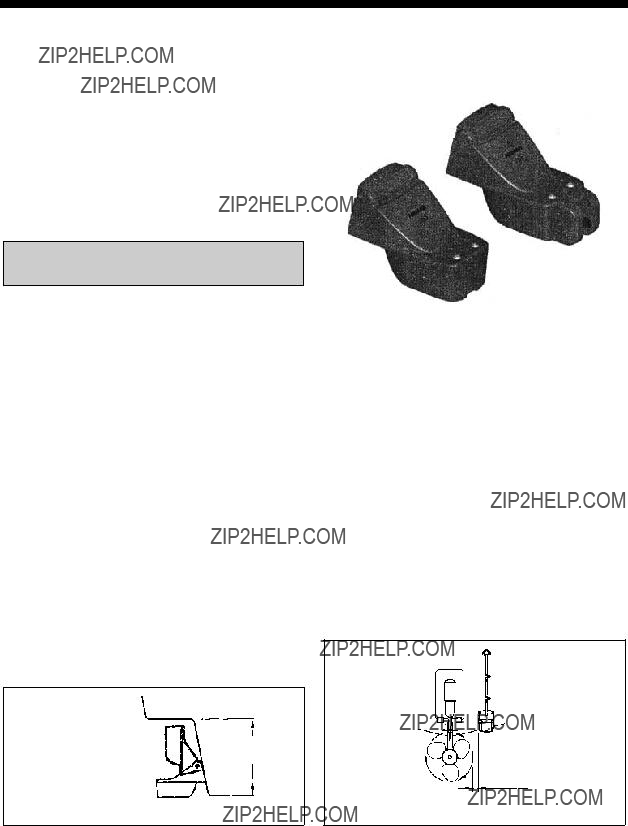
APPENDIX
TRIDUCER
This appendix provides a copy of the installation instructions for AIRMAR triducer. If you loose the original supplied with the triducer, use this appendix.
INSTALLATION INSTRUCTIONS
Transom Mount Transducer or TRIDUCER??
Multisensor with Integral Release Bracket
Model P66
U.S. Patents: 4,555,938; 4,644,787; 5,606,253; Des. 334,335
Canadian Patent 1,233,341
IMPORTANT Please read the instructions completely before proceeding with the installation. These directions supersede any other instructions in your instrument manual if they differ.
Applications
???Powerboats with outboard, inboard, inboard/outboard, or jet drive. Not recommended for boats with large or twin screw inboard motor.
???Bracket protects the sensor form frontal impact only
???Good operation up to 44kn (50MPH)
???Orients the sound beam vertically on hulls with a deadrise angle up to 30??
???Adjusts to transom angles from
Tools and Materials Needed
Height without speed sensor 191mm
Figure 1. Height required at mounting location
Connect the sensor to the instrument and spin the paddlewheel. Check for a speed reading and the approximate air temperature. If there is no reading, return the sensor to your place of purchase.
Mounting Location
To ensure the best performance, the sensor must be submerged in
Allow adequate space above the bracket for it to release and rotate the sensor upward (see Figure 1).
Caution: Do not mount the sensor in an area of turbulence or bubbles: Near water intake or discharge openings;
Behind strakes, struts, fittings, or hull irregularities; Behind eroding paint (an indication of turbulence).
Caution: Avoid mounting the sensor where the boat may be supported during trailering, launching, hauling, and storage.
???Single drive
???Twin drive
75 mm(3") minimum beyond swing radius
Figure 2. Mounting location on single drive boat

APPENDIX TRIDUCER
P66 Installation template
for starboard side of boat
Drill at locations labeled "B" for the following transom angles: 16?? through 22??
 B
B  B
B  B
B
 A
A  A
A  A
A
Drill at locations labeled "A" for the following transom angles: 2?? through 15??
Align arrow with bottom of transom
Align template vertically
deadrise angle
slope of hull
parallel to waterline
Align template arrow with bottom edge of transom
Figure 3. Template position
Caution: Never Use Solvents!
Cleaners, gasoline, paint, sealants, and other products may contain strong solvents such as acetone which can attack many plastics dramatically reducing their strength.
Installation
Bracket
1.Cut out the installation template shown on the left.
2.At the selected location, position the template, so the arrow at the bottom is aligned with the bottom edge of the transom. Being sure the template is parallel to the waterline, tape it in place
(see Figure 3).
Warning: Always wear safety goggles and a dust mask.
3.Using a 4mm, #23, or 9/64??? bit, drill three holes 22mm (7/8???) deep at the locations indicated. To prevent drilling too deeply, wrap masking tape around the bit 22mm (7/8???) from the point. Fiberglass
4.If you know your transom
If you do not know the transom
5.Using the two #10 x
Adjusting
1.Using a straight edge, sight the underside of the sensor relative to the underside of the hull. The stern of the sensor should be
Caution: Do not position the bow of the sensor lower than the stern because aeration will occur.
latch
pivot arm (2)
retaining cover
slot (2)
Figure 4. Attaching the sensor to the bracket

Figure 5. Sensor angle adjustment on transom
2.To adjust the sensor???s angle relative to the hull, use the tapered plastic shim provided. If the bracket has been temporarily fastened to the transom, remove it, Key the shim in place on the back of the bracket.
3.If the bracket has been temporarily fastened to the transom, remove it. Apply a marine sealant to the threads of the two
#10 x
4.Repeat step 1 to ensure that the angle of the sensor is correct.
Caution: Do not position the sensor farther into the water than necessary to avoid increasing drag, spray, and water noise and reducing boat speed.
5.Using the vertical adjustment space on the bracket slots, slide the sensor up or down to provide a projection of 3mm (1/8???). Tighten the screws (see Figure 6).
Attaching the Sensor to the Bracket
1.If the retaining cover near the top of the bracket is closed, open it by depressing the latch and rotating the cover downward
(see Figure 4).
2.Insert the sensor???s pivot arms into the slots near the top of the bracket.
3.Maintain pressure until the pivot arms click into place.
4.Rotate the sensor downward until the bottom snaps into the bracket.
5.Close the retaining cover to prevent the accidental release of the sensor when the boat is underway.
APPENDIX TRIDUCER
Cable Routing
Route the sensor cable over the transom, through a drain hole, or thorough a new hole drilled in the transom above the waterline.
Caution: Never cut the cable or remote the connector; this will void the warranty.
Warning: Always wear safety goggles and a dust mask.
1.If a hole must be drilled, choose a location well above the waterline. Check for obstructions such as trim tabs, pumps, or wiring inside the hull. Mark the location with a pencil. Drill a hole through the transom using a 19mm or 3/4??? bit (to accommodate the connector).
2.Route the cable over or through the transom.
3.On the outside of the hull secure the cable against the transom using the cable clamps. Position a cable clamp 50mm(2???) above the bracket and mark the mounting hole with a pencil (see Figure 6).
4.Position the second cable clamp halfway between the first clamp and the cable hole. Mark this mounting hole.
5.If a hole has been drilled in the transom, open the appropriate slot in the transom cable cover. Position the cover over the cable where it enters the hull. Mark the two mounting holes.
6.At each of the marked locations, use a 3mm or 1/8??? bit to drill a hole 10mm (3/8???) deep. The prevent drilling too deeply, wrap masking tape around the bit 10mm (3/8???) from the point.
7.Apply marine sealant to the threads of the #6 x 1/2???
8.Position the two cable clamps and fasten them in place. If used, push the cable cover over the cable and screw it in place.
9.Route the cable to the instrument being careful not to tear the cable jacket when passing it though the bulkhead(s) and other parts of the boat. To reduce electrical interference, separate the sensor
cable from other electrical wiring and ???noise??? sources. Coil any excess cable and secure it in place with
10.Refer to your echosounder owner???s manual to connect the sensor to the instrument.
cable cover
cable clamp
50mm (2")
Hull projection 3mm (1/8")
Figure 6. Vertical adjustment and cable routing
